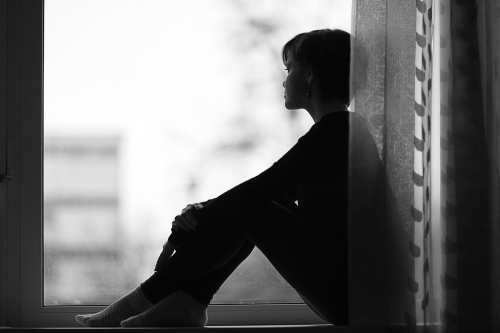This time of year is famed for the ‘Winter Blues’, the underwhelming funk that settles in after the festive season. For many people, this may be a hangover from overindulging in food and drink or splashing too much cash. However, for others, the cold and dark of the winter months trigger a depression that can have a very real and debilitating effect. Expats moving to northern latitudes may find themselves suffering symptoms for the first time.Around three percent of Brits are estimated to suffer from Seasonal Affective Disorder (SAD), a complex condition which sees the shorter hours of daylight disrupting sufferers’ lives. Similar rates are reported in Canada and across Scandinavia. It is estimated by the Canadian mental health association that 15 percent of adults suffer from seasonal depression, but the vast majority do not see their lives disrupted in any major way.
Expats moving from sunny climes or who have pre-existing mental health conditions are at particular risk of SAD. Seasonal changes get more pronounced in extreme latitudes, with daylight shrinking to just a few hours of twilight in parts of Canada and northern Europe. This reduction in sunlight affects the level of hormones produced by the body, notably melatonin and serotonin. This can impact existing diagnoses of depression or bipolar, as well as triggering symptoms in people who are healthy and happy through the rest of the year.
As a species, we are designed to be outside, with our body clocks synched to the rhythms of the natural world. Thanks to electric light and the nine-to-five working day, our modern lives often mean that we have limited exposure to natural light. The circadian rhythms of our bodies use daylight and twilight as cues to release hormones that make us wake bright-eyed, or slip into restful sleep.
When the body gets knocked out of whack, results can include the urge of ‘hibernate’, combining a craving for food with the urge to sleep longer hours, and limited motivation for physical activity.
Vicky Leigh has been diagnosed with SAD for four years, but believes it has affected her life for much longer. “Unofficially, I have probably experienced the disorder for a lot longer,” Vicky says to mental health charity Mind. “I love the summer, I love the sun and warm weather. Winter, on the other hand, fills me with dread.”
Like other forms of depression, SAD cruelly robs sufferers of the joy they might normally find in life. “I don’t see the fun in anything. I have a lack of appetite and getting out of bed every morning feels like climbing a mountain,” explains Vicky. “Things I would normally do, like going to a gym class and socialising with friends, are a struggle.”

About 20 percent of sufferers in the UK report milder forms of the condition, known as subsyndromal SAD, but it will affect everyone differently. Symptoms of any depressive condition can be difficult to spot, and can vary between people and change over time. There are a number of ways to combat SAD, but the first step is to identify the condition and how it impacts on you individually.
According to SAD.org, symptoms can include lethargy during the day but restlessness at night, as well as anxiety and depression. These symptoms can also contribute to social anxiety, irritability and loss of libido. It is not uncommon for SAD sufferers to crave carbohydrates or to gain weight during the winter months. Your first clue that you are suffering from SAD symptoms may be comments made by loved ones or friends who have noticed a change in your behaviour.
If you suspect you may be affected by SAD, seek help from medical professionals. The treatment of SAD is well-established; Nordic countries in particular have a good understanding of the condition. Treatments can range from short courses of anti-depressants to light therapy and exercise.
Vicky told Mind that she was initially reluctant to turn to anti-depressants. “There is such a stigma around these tablets, and this was the hardest part for me to come to terms with.” However, when combined with counselling, the drugs proved to be a big help in coping and, as her doctor explained, nothing to be embarrassed by: “If you had winter asthma, then we would give you an inhaler, you have SAD so we give you tablets to help for a few months”.

The most common treatment for SAD is light therapy, which can take two forms. The first involves adjusting your lifestyle to make the most of the daylight hours, going for a morning walk or sitting close to windows when at work. The second method is the use of artificial light sources. Vicky found an alarm clock that gradually lightened the room to imitate sunrise helped her get up in the mornings, and studies have shown 83 percent of patients using this technique saw an improvement.
Specially designed bright light boxes can be used to introduce light into the home or office at certain times, simulating longer hours of bright daylight. Additionally, this form of therapy establishes a routine and helps battle the lethargy that can leave sufferers holed up in bed.
It’s hardly a surprise that many people from northern climes take holidays in the colder months, partly to escape the freezing cold but also to catch up on some winter daylight. Vacations to warmer countries have been recommended by some countries’ governments for years as a way to combat SAD and vitamin D deficiency.
Cognitive Behavioural Therapy (CBT) works for many anxious or depressive conditions. CBT works on the premise that negative thoughts and behaviours affect the way that we feel. Therefore, one-to-one or group sessions unpick what triggers a sufferer. Therapists will then draw up a programme to help you cope with symptoms but also to break the vicious cycle of negative thoughts driving you down.
Whilst no therapy or medication is assured to work for everyone, simply taking more exercise is widely reported to improve depression. Vicky told Mind, “my mum told me if I joined a gym she would help pay for the membership. This changed my life.” Physical exercise stimulates the body to release endorphins, feel-good hormones similar to those that SAD robs from its sufferers. The Canadian mental health association suggests that good diet and a routine of regular exercise can do much to improve mood swings, and can also reset the body’s natural rhythm and improve self-confidence. Gym passes are even prescribed by NHS doctors on UK.
SAD and any form of depression or anxiety can disrupt your life and upset an otherwise happy home. There can be stigma surrounding mental health issues in some cultures, but help can be found from medical professionals or from online communities. If you have concerns about your state of mind, reach out to find the help you need.

